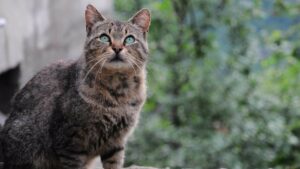Domestic cats have been faithful companions to humans for thousands of years, but their impact on wildlife poses a growing challenge to biodiversity conservation. A recent study highlights how these felines, despite being domesticated, retain their predatory instinct and can significantly affect the ecological balance.
Cats possess natural hunting abilities, including agility, stealth, and precision. Even those who receive proper nutrition continue hunting by instinct, capturing insects, rodents, and birds. This trait, combined with their great adaptability, facilitated their expansion into various ecosystems, posing challenges to local fauna.
According to a study published in Nature Communications, led by ecologist Christopher Lepczyk, feral and domestic cats can consume over 2,000 species of animals, including mammals, birds, reptiles, and insects. This makes them one of the most damaging invasive species to biodiversity, with negative effects on populations of native species.
 Cats. (Photo: GCBA).[/caption>
Cats. (Photo: GCBA).[/caption>
Strategies for Sustainable Coexistence
The challenge of balancing the presence of cats with environmental protection requires specific measures. Some key recommendations include:
- Early sterilization: Controlling the population of stray cats to reduce their impact on wildlife.
- Indoor living: Limiting their outdoor access to prevent hunting of vulnerable species.
- Bell collars: When they go outdoors, this can warn their potential prey.
- Environmental enrichment: Providing toys and activities indoors to stimulate their hunting instinct without affecting wildlife.
- Responsible adoption: Considering the environmental impact before adopting a cat.
- Education and awareness: Informing about the importance of these measures to protect biodiversity.
Benefits of Living with Cats
Despite these challenges, cats offer multiple benefits to their owners. Several studies have shown that their companionship reduces stress, improves cardiovascular health, and strengthens the immune system. Additionally, their characteristic purring has therapeutic properties, promoting relaxation and muscle recovery.
In conclusion, harmonizing the presence of cats with biodiversity conservation is a key task. Through small actions, it is possible to ensure a balanced coexistence that protects both these endearing felines and wildlife.
 Domestic cats can consume over 2,000 species of animals.
Domestic cats can consume over 2,000 species of animals.
Why Cats Scratch Furniture and How to Prevent It
Researchers surveyed over 1,200 cat owners in France about daily life and characteristics, as well as the unwanted scratching behaviors of their feline companions. The researchers’ results showed that several factors influence the scratching behavior of cats.
“We see a clear relationship between certain environmental and behavioral factors and the increase in scratching behavior in cats,” explained Salgirli Demirbas. “Specifically, the presence of children in the home, as well as high levels of play and nighttime activity, significantly contribute to increased scratching. Cats described as aggressive or disruptive also showed higher levels of scratching.”
According to the researchers, stress is one of the main causes of unwanted scratching. For example, the presence of children, especially when young, can increase stress and be one of the various causes that may lead felines to scratch due to stress. However, the relationship between increased scratching and the presence of children in the home is not fully understood, and further studies are needed on this topic.
Source: INVDES-larepublica.pe.
Have you visited our YouTube channel? Subscribe now!

